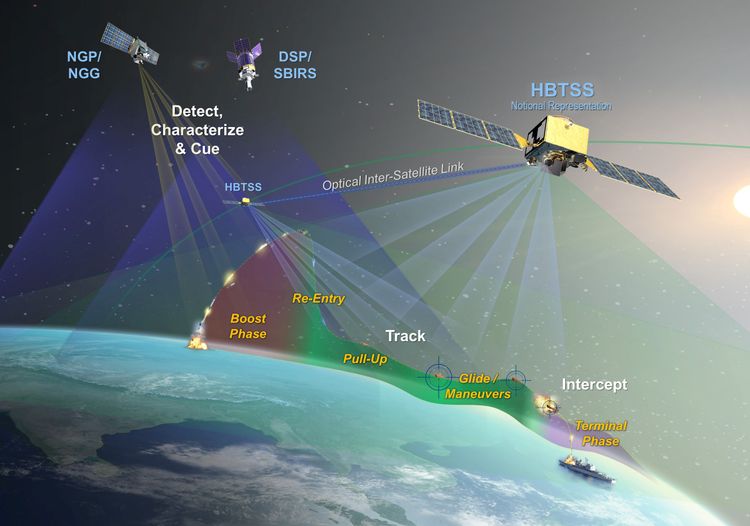
ARLINGTON, Va. — With hypersonic missiles emerging as a serious threat to U.S. Navy ships, the Missile Defense Agency is focused on the use of a space-based sensor for hypersonic regional defense to provide tracking of both hypersonic and ballistic missiles all the way to hand off to the terminal phase.
The MDA has been designated the Defense Department’s executive agent for defense against hypersonic missiles.
“It’s going to maneuver and come in at a high velocity,” said Vice Adm. Jon Hill, speaking Feb. 2 during the Combat Systems Symposium conducted by the American Society of Naval Engineers, noting the challenge of defeating hypersonic missiles.
Hill said that tracking of a hypersonic missile in flight will be the job of the Hypersonic and Ballistic Tracking Space Sensor, a satellite with sensors to detect and track hypersonic missiles. Defense against the missiles in the terminal phase would be the job of the ship-based Aegis Combat System and Standard surface-to-air missiles.
Hill said of hypersonic missiles that with existing sensors “we’re seeing them, we’re capturing data, we’re collecting on them, though noting that the U.S. sensors are “not always in the exact right place, because many of them are land-based and stationary because sensors are purpose built for a particular part of the battlespace.
“We have that and the SM-6 missile with its nascent capability to take on a hypersonic [missile],” he said. “We didn’t call it that back when we got the letter from the CNO [chief of naval operations] to go develop this program. But the whole idea was to handle high-speed maneuver. [The SM-6] is really the nation’s only hypersonic defense capability.”
“We can do warning today on hypersonics, so we’re not at zero,” he said.
“We’re going to take those first hypersonic tracking space-based sensors in coordination with the U.S. Space Force and we’re going to get them on in orbit,” he said. “That’s through a competitive process and we’re really excited about that. We did so much risk-reduction on the ground we’re absolutely confident that those sensors are going to deliver what we need when we put them up.”
The admiral said terminal defense is necessary but not sufficient to defeat hypersonic missiles.
“We’re going to leverage space cueing and fire control from space because, to handle maneuvers across the globe, you’ve got to look down” he said. “Field of view is limited from radars and we’re running out of islands to put radars on.
Under the concept, the HBTSS would detect a missile’s launch and the separation of the first and second stages of the rocket motors. The satellite’s data is continuously relayed and is used to create a track of the hypersonic glide vehicle. The remote track data passed via satellite to an Aegis ship to compute an intercept with a glide-phase interceptor.
- Insitu Going Strong at 30, Focusing on Maritime Operations - April 8, 2024
- Navy Awards Boeing Additional Funds for MQ-25 Drones for Testing - April 3, 2024
- Benign 4th Fleet AOR Useful for Unmanned Vehicle Operationalization, Admiral Says - March 27, 2024






